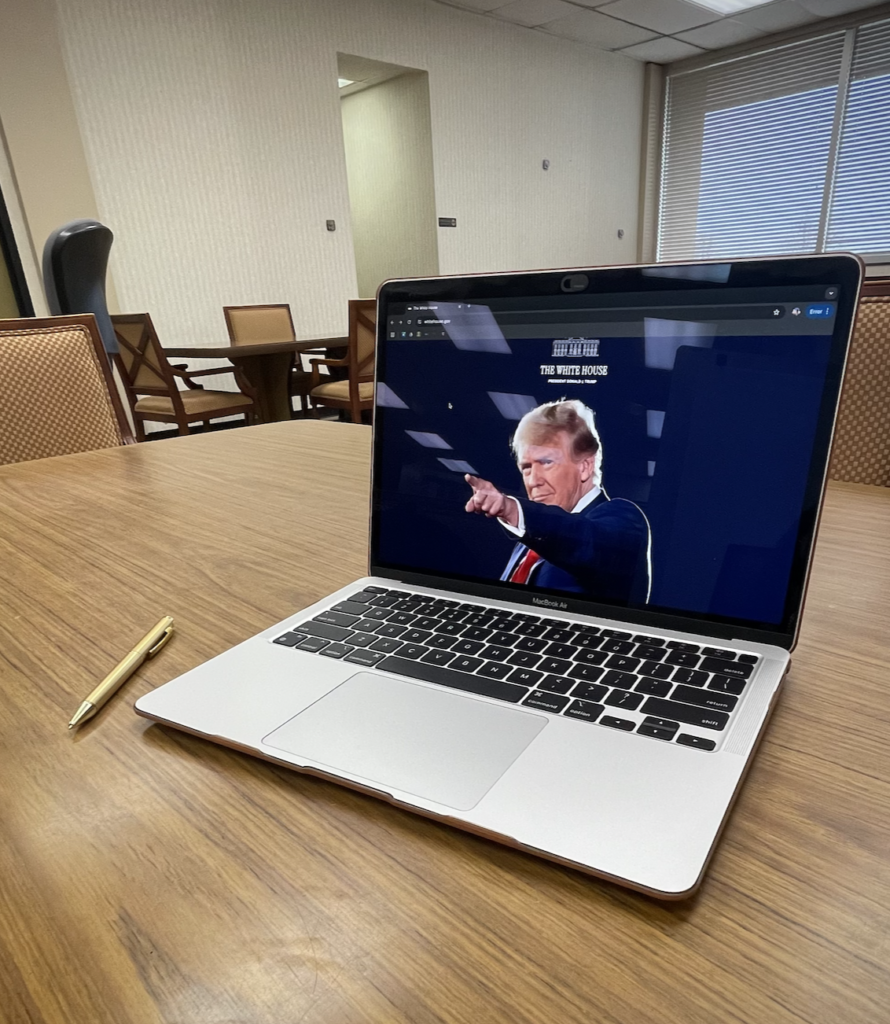
A brief look at President Trump’s executive orders
Samantha Meyeres, Staff Writer
Donald J. Trump was sworn into office on January 20 for his second term as president of the United States and has already signed numerous executive orders covering a range of topics.
According to the American Bar Association, “An executive order is a signed, written, and published directive from the President of the United States that manages operations of the federal government.”
Nicholas Higgins, Chair of the Department of Political Science at North Greenville University, offered insight about some of the executive orders Trump signed upon entering office.
“To clarify,” said Higgins, “an executive order is the president telling the government how they’re going to act. The law is then the government telling us how to act.”
One of the many executive orders that Trump signed was the executive order to end the use of federal taxpayer dollars to fund or promote elective abortion.
This order is not to change any laws that are already in place, but rather to enforce the Hyde Amendment, which prohibits federal funding for elective abortions.
Higgins said, “What Trump has done is say that this law exists.”
This executive order will only produce marginal change on a wider scale. Organizations like Planned Parenthood might have their funds cut that they get from federal grants. Even though it is illegal for them to get grants for abortions, they get grants for other purposes and use them for elective abortions.
Another executive order was signed denying birthright citizenship to children of noncitizens. This executive order has already gone to court and been declared illegal.
This order was Trump’s interpretation of the Fourteenth Amendment. His plan to push this issue was widely debated during his campaign and leading up to his presidency.
The Fourteenth Amendment states that “All persons born or naturalized in the United States, and subject to the jurisdiction thereof, are citizens of the United States and of the State wherein they reside.”
It is the president’s role to define constitutional terms, and in this case the phrase “subject to the jurisdiction thereof” is the one being taken into consideration. The order states that children born in the United States whose parents are not U.S. Citizens are not “subject to the jurisdiction” and should not be granted citizenship automatically.
Higgins said, “this one is less impactful on people since it was stopped because it’s not constitutional, but more important because it shows this willingness to kind of push novel constitutional interpretations.”
Trump also signed an executive order invoking the National Emergencies Act regarding the crisis at the southern border of the United States.
The ability to invoke the National Emergencies Act is a law that was signed in 1976, allowing the president to use certain powers, such as moving money and resources, to the cause that was declared an emergency.
In this case, Trump has declared a national emergency at the southern border of the United States. If this were to take effect, it would look like a stronger presence of the Armed Forces and the National Guard at the border as well as the completion of the proposed wall along the border.
However, there is the probability that this executive order will be challenged in its legality. Higgins believes that there will be lawsuits to figure out who gets to determine when it is actually an emergency.
Higgins also mentioned the unusual use of the word “invasion” in the executive order. This will lead to a discussion on how that word should be interpreted and used in the context of the crisis at the border.
For further information on more of Trump’s executive orders and actions as president, go to whitehouse.gov.
